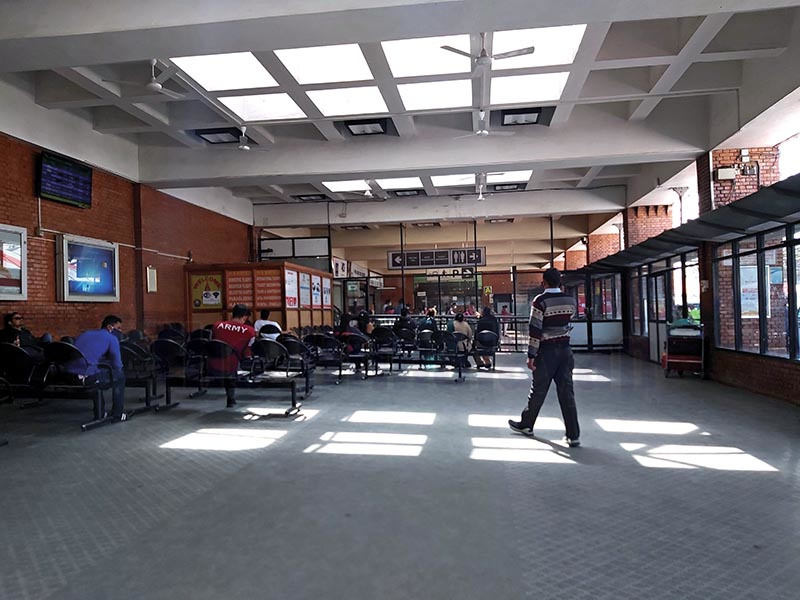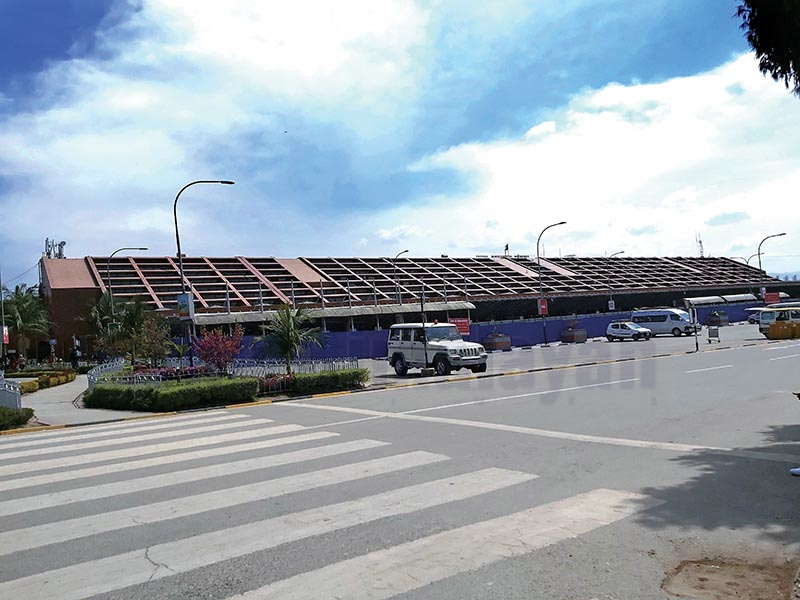Incoming passengers on the loose
Authorities fail to implement mandatory self-quarantine
Kathmandu, March 17
Ishan Mainali arrived in Kathmandu from the US via Qatar yesterday morning. He was joined by his sister, Arya, in Doha, before flying to Kathmandu.
In the wake of new rules introduced by the government to prevent the spread of coronavirus disease, Ishan and Arya are subject to 14-day home quarantine. And the duo has abided by this rule — not because they were told to do so but out of their own volition.
“Who knows I could have acquired the virus during the 30-hour journey from the US,” said Ishan. But not everyone is like Ishan and Arya.

A person, who returned from Montreal, Canada, on Saturday, for example, has already started going to office. “I was not told about self-quarantine at Tribhuvan International Airport,” he said on condition of anonymity. This implies many travellers are not aware about the self-quarantine rule and may have started visiting public places and meeting people without confining themselves to their homes for at least 14 days.
Since Saturday, all foreigners entering Nepal have to remain in self-quarantine for at least 14 days, while Nepalis and non-resident Nepalis returning from abroad must remain in home quarantine for a minimum of 14 days. But the government has not been able to implement its decision, while even after severe cut down in the number of flights at least 4,000 people are entering Nepal via TIA daily.
“A person who was in front of me in the queue at TIA immigration did not even submit the traveller declaration form. But the official, who was collecting those forms, just let him go,” said Ishan.
The new set of rules makes it mandatory for all passengers entering the country from TIA to submit completed Traveller Public Health Declaration Form, where travel and medical history has to be declared, and Self Quarantine Agreement Form, in which passengers have to keep a log of their body temperature and report other medical symptoms. Passengers that THT talked to, including the person who returned from Canada, said they were asked to submit Traveller Public Health Declaration Form at TIA, but no one told them to fill the Self Quarantine Agreement Form.
Yet Hemanta Ojha, an official at the Epidemiology and Disease Control Division, under the Department of Health Services, claimed officials had been following up on health conditions of people returning from abroad. “We are contacting them over the phone and through emails,” Ojha asserted.
But Arya told THT she had not received any call or email. And neither have Ishan and the person who returned from Canada.
“There should be a proper mechanism to track people entering Nepal to find out whether or not they have isolated themselves. People found flouting the rules must be punished as per the law. These measures are essential because people coming from foreign countries are at high risk of carrying the disease and infecting others,” said Baburam Marasini, former EDCD director.
Nepal is still safe from coronavirus threat, as one person who tested positive around two months ago has recovered and 495 others who underwent tests were told they had not contracted the deadly disease. But this should not lead to complacency as the country’s health system could collapse if even a few positive coronavirus cases are detected and the number starts multiplying rapidly as happened in Iran and Italy.
“The government can’t track and monitor all those people entering Nepal. Citizens should also help the government at this time,” said Bikash Devkota, spokesperson for the health ministry.






